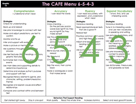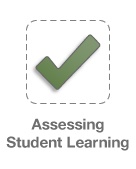Allison Behne
April 24, 2015
Issue #353

Recently, a dear friend called me for advice when her eighth-grade daughter, Adrienne, came home from school in tears because she had missed the cut for an Honors English class. Adrienne was confused, because classmates with lower grades and reading levels were placed in the honors course, yet she, who loves to read, was not. My friend couldn’t understand how her daughter, an A student in reading and English who reads well above her grade level, could be overlooked for a higher-level-thinking course in her best subject.
I explained that these decisions are typically based on various criteria set by the school, and encouraged my friend to reach out to her child’s teacher and be an advocate for her daughter. Surely, either a mistake had been made or there was some clear reason that would clarify the decision and remedy the situation.
What my friend found out was plain and simple, cut and dried. Her daughter would not be in Honors English the following year because her state assessment results were not in the top 25 percent of the class in language arts. I was right; the school district had set certain criteria. Unfortunately for Adrienne, and who knows how many others, the criteria didn’t look at the whole child in determining their future course of study. Instead, it took one snapshot in time, determining that the rest of the work these children did was not significant. Wow…That is a hard pill to swallow. How do you explain such a decision-making process to a teenager when you can’t justify it yourself?
This scenario with my friend’s daughter caused me to reflect on my classroom. What criteria do I use to make instructional decisions in my teaching? Am I looking at one snapshot in time, or am I triangulating the data and planning instruction in a way that meets student needs to the best of my ability? How am I organizing this information? Am I making my thinking transparent by including my students in conversations about their progress?
Questions like that caused me to begin using CAFE many years ago. With CAFE, I am able to assess students, organize information, and plan purposeful instruction. My students know their strengths and are aware of growth opportunities. The criteria I use to plan my instruction isn’t cut and dried, but instead is based on brain research, student data from summative and formative assessments, and information gathered during individual conferences.
Whew! I am able to breathe a sigh of relief knowing I am doing what is best for students. This week I encourage you to reflect on the criteria you use to make instructional decisions. I have no doubt that Adrienne and many other students all over the world will benefit from this type of purposeful, fully informed decision making. Check out all of the amazing resources we have to help guide you, which are featured in this week's Tip.
News from The Daily CAFE
 The Interactive CAFE Menu and Where to Begin
The Interactive CAFE Menu and Where to Begin
The Interactive CAFE Menu makes it easy to find everything you need to teach and reinforce specific strategies. Not sure which strategies to start with? Now there’s 6-5-4-3 to the rescue!
 Powerful Instruction—Brief Focus Lessons
Powerful Instruction—Brief Focus Lessons
We have found that when we start with the outcome and objective of our lessons, concisely stated, the rest of the lesson takes on a purposeful, explicit tone, lasting 7–10 minutes. Brief Focus Lessons are downloadable and ready to use. You’ll want to check out our brand new grade-level-specific focus lessons!
 We Love Books!
We Love Books!
Find new favorites or ideas for teaching with books already on your shelves in our Book Looks and Lit Lessons sections.
 Remembering Key Details of Strategy Instruction
Remembering Key Details of Strategy Instruction
These strategy-specific, downloadable documents will help you remember the key details of the CAFE Menu strategies you need to teach your students.
 School-Home Connection—Parents as Partners
School-Home Connection—Parents as Partners
Parents are able to support and reinforce personalized goals when provided with an informative handout that matches their child’s in-school strategy work. Check out this way of storing that makes them readily available for easy distribution. Parent Pipelines are available in both English and Spanish.
 Monitoring Progress with Assessments
Monitoring Progress with Assessments
Download these sheets if you want help assessing student mastery of strategies. Each guide includes Common Core alignment, possible text selections, a link to the corresponding Ready Reference Guide, various options for monitoring progress, and a 1–4 rubric scale.
 Conferring—The Workhorse of Instruction
Conferring—The Workhorse of Instruction
Here’s everything you need for powerful one-on-one conferring, whether you prefer a paper binder or an electronic version for your conferring notebook.
 CAFE, Common Core, and a Menu for Emergent Readers
CAFE, Common Core, and a Menu for Emergent Readers
Check out the Common Core Menu for your grade level, take a peek at a matrix that provides an at-a-glance view of grades one–eight, and visit the menu that will help your emergent readers become accurate, fluent, understanding readers.
 Launching Daily 5 and CAFE Simultaneously
Launching Daily 5 and CAFE Simultaneously
You may want to save this page in your “favorites” so you’ll be ready to launch Daily 5 and CAFE simultaneously and seamlessly.
 “I Can” Bookmarks
“I Can” Bookmarks
These bookmarks are a great resource to help students zero in on what will make a strategy work for them.
Professional Development Opportunities
Live chats provide us with an opportunity to answer your questions. Are you a Daily CAFE member? Then mark your calendar and come to the session or sessions that work best for you. Gail and Lori, or Joan and Allison, will be there to share their thoughts on what you want to talk about.
Wednesday, April 29, 4:00 pm (Pacific Time)
The Join us link becomes live five minutes before each session begins.
2015 Live WorkshopsWe are excited about our 2015 workshops. At each location, the first day will focus on Daily 5 and Math Daily 3. Day two is a new CAFE Intensive.
|
2015 Online SeminarsPrefer short bursts of information combined with independent learning? Each session offers separate seminars on Daily 5, CAFE and Math Daily 3. Learn more about Daily 5 and CAFE workshops, online seminars, and online graduate courses. Up & Running with the Daily 5
|






 Our new how-to video, shot in third-grade and fifth-grade classrooms, is available through subscription for online streaming or as a DVD. Go to
Our new how-to video, shot in third-grade and fifth-grade classrooms, is available through subscription for online streaming or as a DVD. Go to